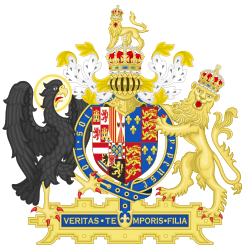| Act of Parliament | |
 | |
| Long title | An Act, touching the Articles of the Queen's Highness's most Noble Marriage. |
|---|---|
| Citation | 1 Mar. Sess. 3 c. 2 |
| Territorial extent | England and Wales |
| Dates | |
| Royal assent | 5 May 1554 |
| Commencement | 2 April 1554 [a] |
| Repealed | 10 August 1872 |
| Other legislation | |
| Repealed by | Statute Law Revision Act 1863 |
| Relates to | Queen Regent's Prerogative Act 1554 |
Status: Repealed | |
| Text of statute as originally enacted | |
The Act for the Marriage of Queen Mary to Philip of Spain (1 Mar. Sess. 3 c. 2), or Queen Mary's Marriage Act, was an act of the Parliament of England to regulate the future marriage and joint reign of Queen Mary I and Philip of Spain, son and heir apparent of the Holy Roman Emperor Charles V.
Contents
In reality, the act seems to have served as a business contract between England and Spain; it specifies what Spain could expect from the union, while at the same time assuring the English that England would not become a satellite of Spain.